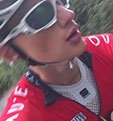A stalwart on the sportive scene, the Tour of Wessex has been around for many a year, and was the first multi-day event you could ride in the UK.
A three-stage monster taking you around the highlights of the lumpy southwest, you can opt for a leg breaking 330-mile tour, or a shorter version of around 200 miles. Neither are for the faint hearted.
I've ridden the event three times now, and it certainly holds a soft spot in my heart. Here's some of the reasons why I keep coming back, some of the things to look out for, and a look at how it went for me in 2018.
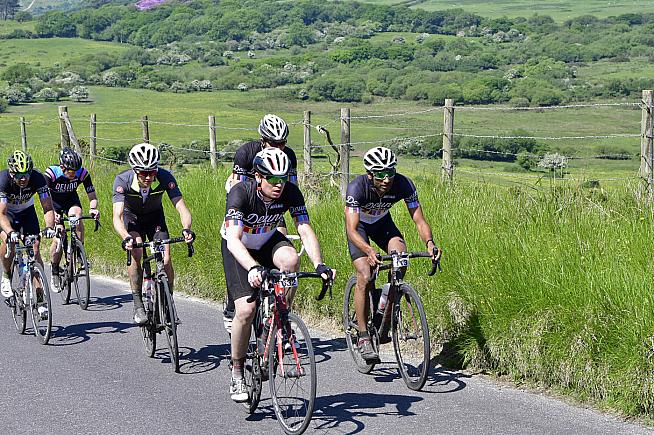
Three reasons the TOW is ace
1. No big-name sponsors, no fancy-pants KOM sections, no goodie bags with pointless crap in them.
At the Tour of Wessex, the feed stations are laden with traditional classics: fig rolls, jelly babies, soreen and sandwiches, with a notable absence of fancy-pants nutrition brands.
There's ride timing, but it runs for the whole of the stage not certain sections - you won't find any newfangled KoM challenges here. Furthermore, you don't get talked into paying more to enter with the promise of getting a bag of nonsense samples at the end of the event that you don't need.
For £135 you get well-signed routes, two or three ample feed stations per stage, optional massages after each stage, mechanical support, a medal, and a token gift of a Tour of Wessex pen (more useful than a bottle of the latest protein milk, or whatever it may be you get at other events).
That's all you need. At £45 a day, I think that's great value - especially if you weigh it up against the £100 mark you're looking at for things like Dragon Ride or Velo South.
2. It's bloody hard, but doesn't make a song and dance about it
If you ride the long routes, the Tour of Wessex is bloody hard. The days are long, the roads are very lumpy, and some of the climbs are tough enough to make a grown man weep. But it doesn't make a song and dance about it. It's not called 'The Terror of Wessex' (though my friends and I tend to call it the 'Torture of Wessex'), or try to brand itself as 'the hardest event in the UK'. It just gets on with it and lets your legs decide how hard it is.
3. No BS with entry waves and start times
Unlike some big events, you don't get given a set wave to start in at a very specific time. On the Tour of Wessex everyone rolls out at 8am, in groups of around 50, with a few minutes between each. The keen get into the start pens first and get off early, the more relaxed chill at the back and let the over-enthusiastic idiots like me go first.
Your start time is determined by how pointy your elbows are and how keen you are to get to the front. You're not herded like cattle and checked off against lists.
Three types of rider on the Tour of Wessex
1. Competitive idiots
For some, such as me, the event is taken pretty seriously, with the front groups on the road being taken at breakneck pace, chaingangs forming, and riders risking massive dehydration by refusing to stop even to top up bottles. At the pokey end, the event can feel like a road race, and it's an adrenaline shot you won't forget.
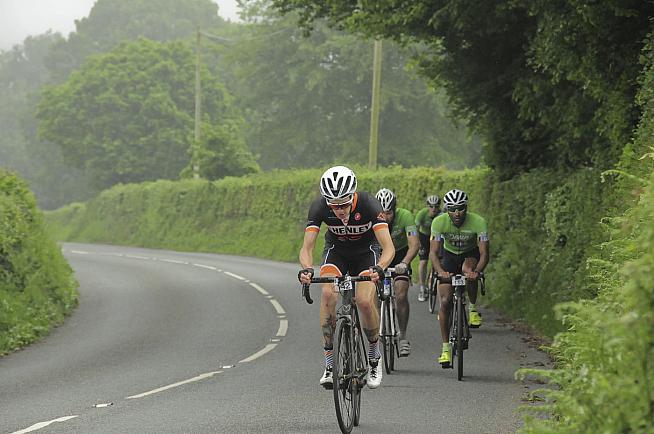
2. More sensible people
In the middle of the field, you have the enthusiastic riders who are fit and strong, but aren't going to break themselves to prove to the world that they can come in the top 10 or achieve a gold standard time.
3. The most sensible people
For a fair few riders, the stages are taken in a leisurely fashion on all manners of bikes - hybrids, commuters, whatever you can think of, with the eye on the clock purely as a means of avoiding the broom wagon, as opposed to chasing a time. The ride is taken with head up, admiring the views, rather than the numbers on your Garmin. Feed stations are like mini-picnic breaks, rather than 30 second dashes for emergency fuel supplies (see 'competitive idiots', above). It's a jolly nice day out (or three.)
Three climbs for the bucket list (or for the puke bucket)
1. Dunkery Beacon
Depending on exactly where you determine the start to be, Dunkery Beacon is around 3km of more-or-less constant pain.
Kicking up fiercely at the bottom for 1km of 16-20% gradient, it lulls you into a sense of false relief and belief that you've finished around half way up, with a brief plateau. This is just the warm-up however, as what then follows is over 1.5km of a gradient averaging around 13%, kicking up to nearly 20% for the final agonising minutes at the very summit.
Although you'll mostly be staring at your stem, try to look up, as the views over the moors and back across Somerset are incredible - I was particularly lucky to climb it on a stunning clear and sunny day. Though I could have sworn I was seeing a few stars too?
2. Cheddar Gorge
The first proper climb of the first day, and one that people always get excited about is Cheddar Gorge.
On leaving the village of Cheddar, you wind through some ever-steepening bends set deep in the limestone rocks, which tower over you like mini-cliffs on either side. It's a pretty tough climb, with the road rearing up steeply in places, before it then levels out and grinds away at an annoying 3-4% for a km or so.
It's a nice climb although I don't find it all that exciting - but maybe that's simply because it always seems to be enshrouded in damp mists and fog when I ride it, so you can't really see all that much. On a clear day I may change my mind.
3. Whiteway Hill (East Lulworth)
It's not the biggest, hardest or steepest climb out there, but this one is just nice. Located around half way through stage two, down on the south coast, as you climb you can see the Lulworth tank firing ranges stretching out for miles to one side, and the sea on the other. It's always been clear and sunny when I've been down there and it's hard to keep check on your tourist instincts, and the desire to get some selfies for the social media output of your choice.
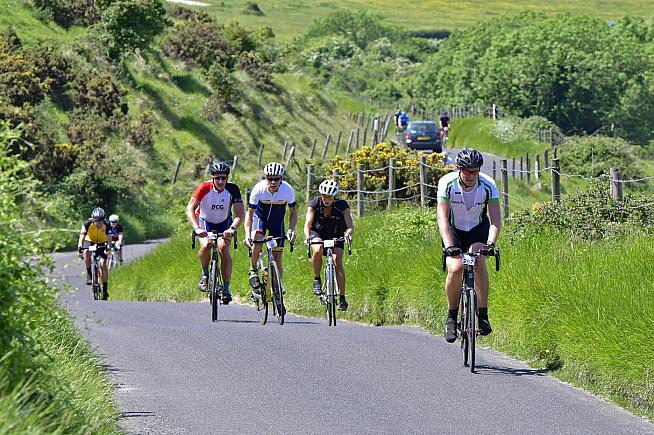
Three tips for the tourists
1. Two coasts
You ride to the south coast on day two, through Lulworth and Corfe Castle. You ride the other way, up towards Minehead on day three. On both stages, on a clear day, the views over the sea can be spectacular. There's something very satisfying about a bike ride to the coast; it's just a shame that, for me, fish and chips and ice creams are swapped for jelly babies and malt loaf shovelled into my gob during 60 second pauses at feedstations.
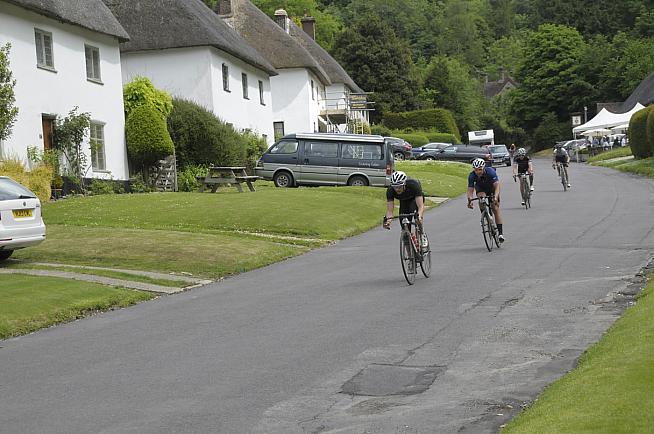
2. Corfe castle
A gloriously ruined castle nestled in the Purbeck hills of the South Cost, and, to lazily copy the National Trust description, 'Corfe Castle has been a Saxon stronghold, a Norman fortress, and a royal palace over ten centuries'. You ride right alongside it during stage two, and I never cease to find it quite spectacular, despite having seen it three years on the trot.
3. Exmoor
It's pretty amazing up there on Exmoor. Beautiful in a bleak way, remarkably devoid of humanity beyond walkers and idiot cyclists. The moors are huge and expansive, and you feel in the middle of nowhere, in a land before civilisation.
A warning though - the road here is either up or down, and almost never flat. And some of those ups are very UP. Up in a 20%+ gradient type of up, as you find out the painful way several times on stage three.
Three Stages
1. Stage One: For the Rouleurs
Probably the stage that you would call the flattest, though still racking up a solid 1700m of climbing over its 160km distance, stage one is a day for the big, solid riders capable of putting the hammer down and putting the hurt on the little guys.
These rouleurs do however have to negotiate Cheddar Gorge and the gnarly climb to Alfred's Tower, but from thereon, it's plain sailing.
This year, on the day itself the heavens decided to open on the nervous peloton as we waited in the pens for the 8am roll out. Right on cue, at 7.55am, the rain came down, and it came down HARD, until at least 9am, soaking riders and roads alike.
As the Tour takes you down all manner of country lanes, we all soon enough looked like we'd ridden the infamous Paris-Roubaix, with mud and road spray covering our every orifice.
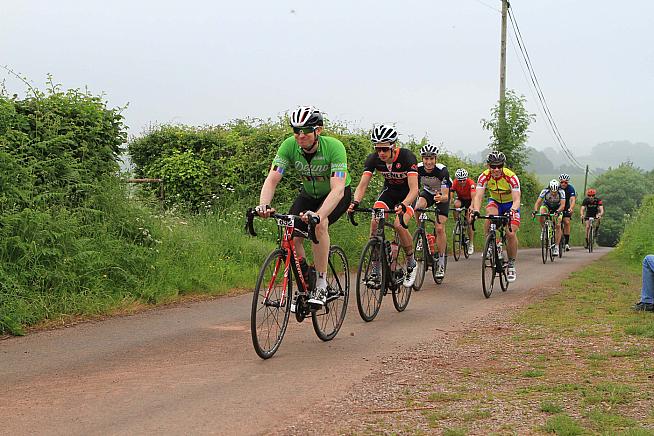
I rode a solid but conservative ride, getting over the Cheddar Gorge in the second group on the road, and finding a strong group to ride with from thereon. Conscious of saving my bullets for big days to come, I made sure I pulled my weight in the through and off that carried the group home the final 60km or so, but never over-worked. I finished the day with my powder dry, if little else.
I returned home to find mud in my ears, my eyes, up my fingernails, in the jersey of my pocket, and on 105% of my bike.
2. Stage Two: For the Classics Hardmen
A beast of a stage, at over 190km long, and with 2,100m of climbing. The stage is characterised by a fast flat first hour, two consecutive leg-breaking climbs that serve to break the peloton down into groups, a rolling rumble down to the south coast, over Whiteway hill (see above), before the long rolling return north, back to HQ.
You need endurance, good climbing legs, and the ability to hold it down in the final 40km when the roads flatten out a bit and the hammer goes down.
From previous rides at the Tour, experience told me that this could be the most enjoyable and exciting day of the three; fight hard over the initial climbs, get yourself into a fast and effective group, and see out the day with your new teammates, working in epic camaraderie for the remaining 120km, to return to HQ to re-tell stories, exchange high-5s, and pledge to be friends forever.
Not the case in 2018 however. Again, right on cue, at 7.55am, the rain came down, not for long, maybe only 20 minutes, but so hard that the roads awaiting us were filled with standing water, mud, and large stones blown off the fields. It was a minefield. So you know what will happen next.
Having ridden hard to get myself in a strong group over the early 'selection' climbs, again, in the second bunch on the road, I picked my way down a sketchy descent with my ride-buddies. However, there was one too many rocks to dodge on that hill and I went over it, at speed, and full on.
Within seconds that tell-tale noise filled my ears, and my heart broke. One minute, I was congratulating myself and settling in for a romp to the coast and back with the group I'd got into; the next, I was side of the road, fixing a double puncture, watching with frustration and dismay as group after group rode past me.
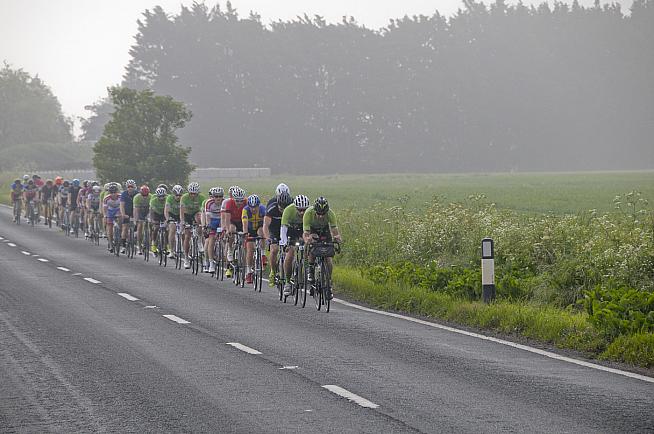
After a solo chase for at least an hour I somehow caught back onto a good group that had also been curtailed by punctures (as had around 50% of the peloton, judging by the number of dismayed riders I saw by the side of the road, grappling with wheels, throughout the day).
We were working together nicely, and that fuzzy feeling of being sorted for the rest of the day - just needing to cling on and not get dropped - was settling in. Then, down another carnage strewn side road, puncture number three struck.
I begged a tube off one of my group, as I was now totally out of spares. One absolute hero lent me one, and there I was, on me tod. As I changed the tube, my energy and patience fizzled away. I spent the remaining 50km of the ride in mostly inglorious isolation, grinding away increasingly slowly, and increasingly angry, contemplating quitting, my mojo in ruins.
3. Stage Three: For the Climbers
A big day with lots of big grades through the Quantock Hills and Exmoor National Park, you need your climbing legs and a big cassette for this one. A slightly new route for 2018 reintroduced the feared Dunkery Beacon climb, which had been rested from the Tour for several editions prior. It also included three other very unpleasant climbs, and by way of a bonus threw in a heck of a lot of grinding roads that aren't really climbs, just to finish you off.
Having resolved to finish what I started after contemplating quitting the day before, I was determined to finish on a high. With a beautiful day beckoning, I regathered courage and mental fortitude.
I somehow got over the first selection climb - the one that would split the peloton - in the first group, which was then split in two on the next significant climb which took us onto the moors. I was stuck between the two groups and eventually fell into the company of one other rider.
We determined to ride as a two-up and see how we got on, figuring a bigger group behind would collar us. We rode the following 70km in splendid isolation, before picking up a third for a final tear up through the 40km flat run in-to HQ, a last-gasp emptying of the tanks at the end of a hard weekend.
Somehow we finished in the top 12, and I was chuffed. High-5s exchanged, stories retold, cans of Coke shared. Weekend saved.
Three lowlights of my 2018 Tour
1. Rain. Lots of rain.
Yeh, the rain was grim. Riding out on day one in a nervous and adrenaline-pumped peloton was a little nerve-wracking, with greasy surfaces and so much road spray you couldn't see if you kept sunglasses on. And to have it repeat on day two just felt a kick in the nuts. And with that rain, came...
2. Three punctures
I run Continental GP4000s tyres, which are pretty sturdy. Sure, they're no deep winter tyre, but they have always worked well for me. On day two, after the monsoon rain turned the roads into something akin to white water rapids, they stood no chance. And I wasn't the only one. The number of reports, and sightings, of punctures on both day one and two was outstanding. I bet Wiggle are making hay right now as everyone restocks their depleted inner tube stashes.
3. Filth-caked pizza munching
On day two, after three punctures and a bonky crawl home, I didn't make it back to HQ until nearly 3pm. Then, after cleaning my bike down (for it was looking like a CX machine), drinking some Coke, and generally being angry, it was 4pm and all the shops had shut as it was a Sunday. My chance for a post-ride lunch at the hotel had evaporated (though please note, there is a café at HQ where pasta and sandwiches were available).
Knackered and annoyed, there was only one choice. Direct to Pizza Express. With no trip home for a shower, a wet wipe washdown ensued, though it was a very lacklustre one. I sat in the pizza restaurant with mud still in my ears and splattered on my shins. Sure, I'd changed my clothes, but I must have smelt like a farm, and looked like I'd just rolled around in one. Not a moment to put on the CV.
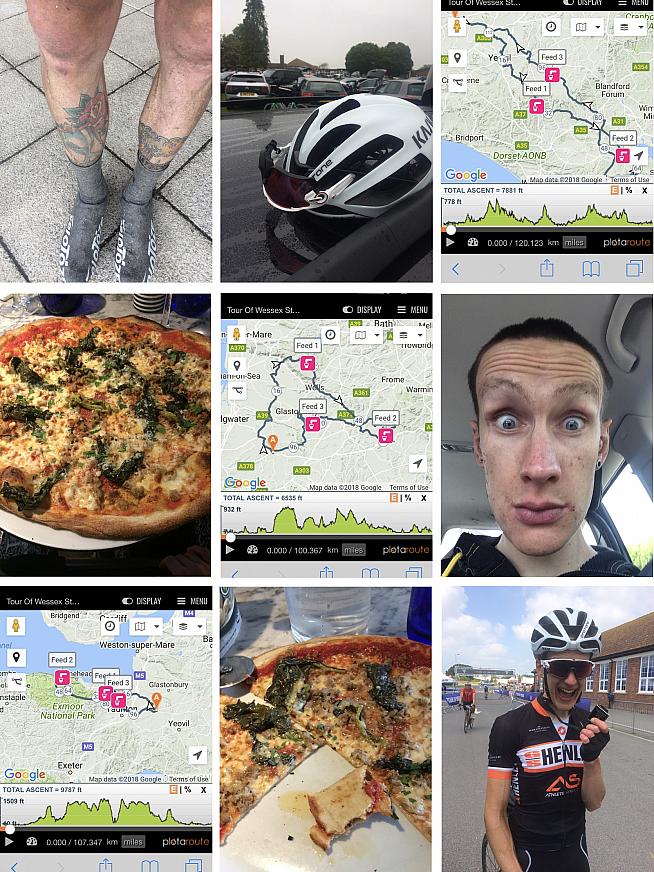
Three Highlights of my 2018 Tour
1 Coming in the top 12 on stage three
After nearly bailing following a spirit-crushing ride on day two, I almost didn't even hang around for the final stage. But I pulled my socks up, and got out there. To finish in the top 12 on the day, having spent the majority of the ride sharing the work with only one other rider, was a great way to end the week, and put a bit of shine back on the mojo.
2. Getting up Dunkery Beacon without falling over
Dunkery Beacon is a climb to slightly soil your chamois over, as discussed in the 'climbs' section above. As I ground up the damp, wood-shaded roads at the bottom half on stage three, I saw a cattle grid before me, set at a hideous 18-20% incline. The usual conundrum of, 'do I ride this sat in the saddle or up on the pedals' arose.
Having chatted with someone about cattle grid tactics earlier in the day, I opted for what I usually wouldn't do, and rose to stand in the pedals. As I went over the grid at about 50rpm and 5kph, my back wheel slid and skidded on every single one of the damp metal bars. With every skid, I had visions of my back wheel falling through into the ether below, or of me grinding to a halt and toppling over sideways, tangling myself in a shameful mess in the metal bars. My heart rate rose about five beats with every terrifying slip and shake.
I just about made it over with my dignity intact. I could barely believe it. Small victories.
3. Filth-caked pizza munching
Can a lowlight be a highlight as well? Eating a pizza still caked in your own filth, and half the mud from various counties of the South Downs, is a liberating experience. I sort of revelled in it.
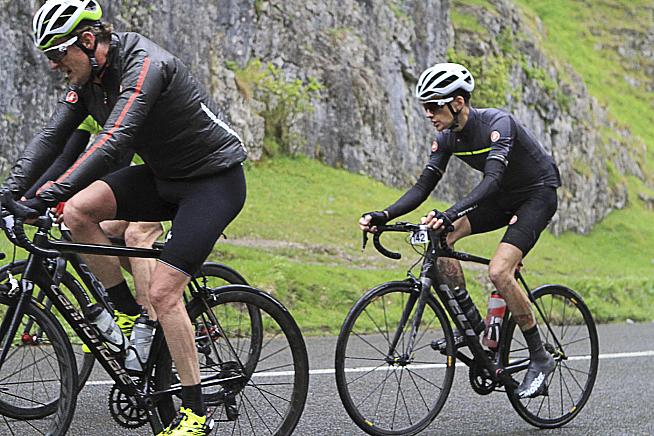
Final thoughts...
So, another Wessex in the bag, and a very mixed bag at that. The event remains as great as ever, and although the rain and punctures dampened spirits for a while, I'll continue to think of the event with nothing but fear and fondness.
The Tour of Wessex returns in 2019. For more info on the full programme of cycling events from Pendragon Sports, visit www.pendragonsports.com.
0 Comments

